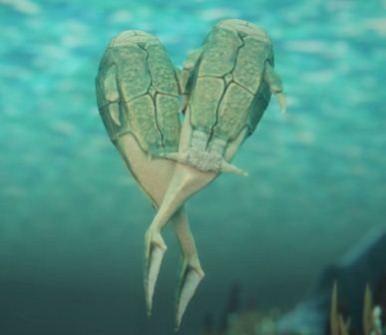
About 385 million years ago, a couple of primitive bony fish living in an ancient Scottish lake discovered the joy of sex and forever defined the future. Based on the groundbreaking research conducted by a team of scientists led by world-renowned palaeontologist and Flinders University professor John Long, it has been revealed that ancient armoured fish, called placoderms had first discovered the intimate act of sexual intercourse, which has evolved with time.
Their findings, which have been published under "Copulation in antiarch placoderms and the origin of gnathostome internal fertilization" in Nature, reveal that the male specie of Microbrachius dicki, which belong to the placoderms group, would develop L-shaped genital limbs called "claspers" to transfer sperm into females, while the females developed small-paired bones to lock the male organs in place during the mating.
An HD animation based on their studies has been uploaded by Flinders University, Australia on their YouTube channel:
Microbrauchius, which measures around 8cm in length, were said to be habitants of ancient lakes in Scotland. While the literal translation of their name is "little arms", the actual use of these arms has been baffling scientists for centuries, until now. "We've solved this great mystery. They [the hands]were there for mating, so that the male could position his claspers into the female genitalia," Professor Long said in the Flinders University Blog, under the title "Flinders scientist discovers origins of sex".
Professor Long had stumbled across a single fossil bone at the University of Technology in Tallinn, Estonia, which symbolised the "most primitive known vertebrate sexual organ ever found, demonstrating the first use of internal fertilisation and copulation as a reproductive strategy known in the fossil record," he said.
With this discovery, the very point in evolution where the origin of internal fertilisation in all animals began has been defined, Professor long adds.
Another co-author of the paper and Flinders Postdoctoral Research Fellow Dr Brian Choo, says the research signifies that point in evolutionary history, wherein males and females first began to exhibit distinct physical features. "This is the first time in vertebrate evolution that males and females developed separate reproductive structures," he said.
Male and female fossil specimens of Microbrachius fossils have been kept for public viewing in the foyer of the South Australian Museum from 20 October. Meanwhile, a video documenting the discovery has been uploaded to the Flinders University YouTube channel:

















